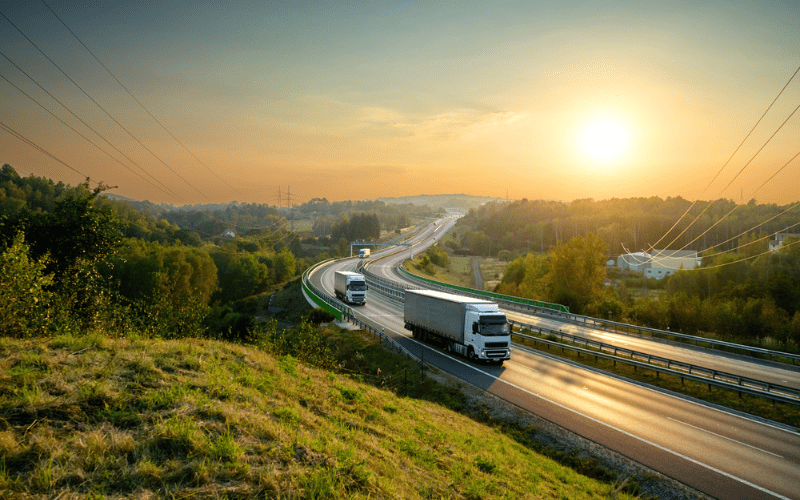This is Part 3 of a multi-part series addressing logistics imperatives necessary to manage uncertainly and disruptions heading into 2022. You can find Part 1 here and Part 2 here.
Transportation is one of the biggest contributing factors to the world’s greenhouse gas emissions, and virtually every country is now mandating stricter regulations to reduce their carbon footprint and mitigate the effects of climate change. In the EU, the European Green Deal seeks a 90% cut in emissions by 2050, and U.S. President Joe Biden recently announced the country’s goal of reducing greenhouse gas emissions by up to 52% by 2030.
So it’s no surprise that according to the 2021 State of Supply Chain Execution Report, conducted by Reuters Events Supply Chain in partnership with Blue Yonder, 50% of logistics providers are investing in sustainable programs, like seeking out more sustainable upstream operations and implementing eco-friendly packaging options. And although 54% of logistics executives paused their sustainability initiatives due to the pandemic, 80% have either fully or partially reinstated them.
Shifting the entire logistics industry to more sustainable operations isn’t just good for the environment — it’s also the smarter and more profitable strategy for everyone. Here are three ways to drive sustainability in logistics and transportation that ensure organizations can still service their customers efficiently and with lower costs, while also choosing eco-friendly modes.
Reduce your carbon footprint with technology
“Transportation efficiency can be improved by reducing unnecessary kilometers (or miles), better freight load management, greater data transparency and increased communication and coordination between stakeholders in the sector — and at the heart of this sustainable approach is technology,” shares Daniel Kohut, VP Australia and New Zealand, Blue Yonder.
Logistics companies and retailers should consider technology to help with sustainability efforts. Walmart, an American multinational retailer and the world’s largest company by revenue, is a fantastic example of what can be achieved by working diligently to reduce transport-related CO2 emissions. According to Rebecca Henderson’s book Reimagining Capitalism in a World on Fire, “something unexpected happened. Walmart found that saving energy was making the company a great deal of money.” A transportation management system (TMS) could actually help the bottom line and the environment!
Carbon footprinting is playing an increasingly important role in deciding modes, routes and overall transportation costs. According to the European Commission’s Mobility and Transport website, road transport alone is responsible for almost one-fifth of EU emissions and almost half of freight transport activities. With fuel costs exceeding 20% of transportation costs and with increasing annual miles because of e-commerce and omni-channel fulfillment activities globally, logistics operations have an urgent mission to:
- find more eco-friendly carriers
- leverage alternate routing options, for example, through bypassing cross-dock, interleaving return with pickups
- speed up automation of remaining manual processes
With efforts such as standardizing to a TMS solution by Blue Yonder, Walmart met its goal of doubling the transportation fleet’s efficiency, which led to savings of more than a billion dollars a year in costs. The author’s calculations showed that the retail behemoth received at least a 13% rate of return on capital — “at a time when many retail companies scramble to make five or six percent.”
Let data science do the planning and optimization
The goal of yesterday’s transportation and logistics tools was to maximize efficiency simply by minimizing miles. The critical flaw, however, is that they don’t consider other factors that can impact performance, including traffic, weather, driver schedules and, of course, carbon emissions.
Today’s logistics planning and execution solutions use artificial intelligence (AI) and machine learning (ML) to automatically and dynamically factor in all these variables to reduce the carbon footprint and avoid delays. Route planning and optimization from Blue Yonder enables organizations to choose more multi-modal transport that are aligned with service level targets, capacity constraints and schedules. The solution also looks for various options to route an order and proposes the best solution across all business priorities for optimal results.
In addition, the TMS ML capabilities include predicting delays at load, stop and shipment level through probabilistic root cause analysis for the delays. ML models consider an extensive number of factors to find the biggest influencers of delays. ML models can also predict carrier performance and in-execution risks such as ETAs for loads currently in execution.
Automate manual processes
Despite heavy regulations and mandates, the global transportation industry — shockingly — still relies on paper-based processes and operations. Shifting to digital workflows greatly reduces paper waste, eliminates time-consuming manual processes and removes many sources of error that can have significant downstream impacts — such as a transposed address that could send a truck driver on a very expensive and environmentally-wasteful wild goose chase.
TMS solutions can help eliminate most manual, paper-based processes and improve efficiencies with software-based:
- pick-up and drop quantity confirmation
- trailer check-in and check-out
- dock scheduling and yard management
- freight claim management
- digital signatures and shipping documents
There’s a lot of pressure to achieve greater sustainability across all industries, especially transportation. By reducing the carbon footprint, automating manual processes, and letting data science do the planning with real-time information, transportation and logistics companies can meet these challenges. The right TMS truly can help ensure organizations are still able to service their customers efficiently — but not at the cost of the planet.
To learn more about sustainability efforts in logistics, check out our LinkedIn Live Top Priorities for 2022 and Beyond.

